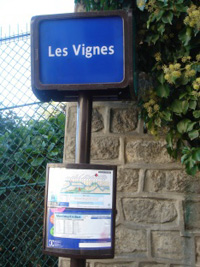
|
|
Stop on demand: Vineyards in Paris
|
Through winding streets and across romantic squares with resounding names such as Moulin de la Galette, Place du Tertre, Cortot, Saint
Vincent, Rue de Saules.... a minibus curves every quarter of an hour through the legendary artists' quarter of Montmartre in Paris. Shortly after the neighborhood museum (Musée de Montmartre), a stop appears labeled "Les Vignes" (Vines or Vineyards). In fact, there is a small vineyard in Montmartre, probably the last one in and around the cosmopolitan city. It is located opposite the birthplace of the painter Maurice Utrillo, in the center of the still largely village-like quarter. On only 1556 square meters, 27 different kinds of vines are spreading, supposedly all of them important for the
French wine world. The exotic-looking vineyard can be
seen by the many tourists, but it is not accessible. Which is understandable, since in autumn - at the traditional vintners' festival on Montmartre - they want to serve their own wine.
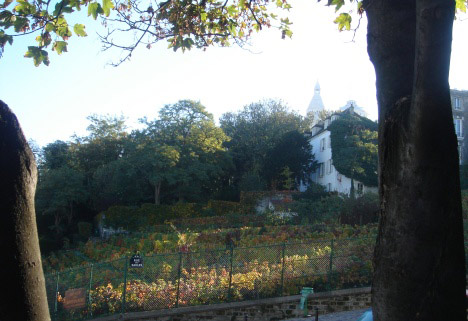
|
|
Clos Montmartre: Vineyard with 27 grape varieties
|
"Clos Momartre" is a historical relic, admittedly only newly planted in 1933 by the society "Le Vieux Montmartre", the keepers of the old traditions. But the "house hill" of Paris was already planted with vines in Gallo-Roman times and as late as the 17th century, most of the inhabitants of Montmartre were still working in the vineyards. It was not until the 19th century that the city expanded so much that the vineyards had to gradually disappear. Apparently there was no shame in the wine that was pressed here at that time, because the popular saying even then was: "C'est du vin de Montmartre. Qui en boit pinte en pisse quarte" (" This is wine of Montmartre. Who drinks a " pinte " (about 1 liter) of it, pees a "quarte" (67 liters)".
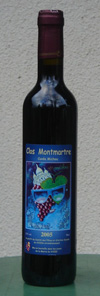
|
|
50 cl bottle "Clos Montmartre" at approx. 40
|
Every year in October there is a street party where the wine of the previous year is sold for about 40 euros (50-cl bottle!). However, and this is the special thing: the wine is pressed in the cellars of the Mairie (town hall of the 18th arrondissement). The proceeds go entirely to social services and are therefore tax deductible (if you live in
France!).
"Clos
Montmartre" is not only a romantic reminder of earlier winemaking days, it also symbolizes the artistic life of Montmartre, the hotbed of Impressionism and many a style of art.
Renoir, Degas, Cézanne, Van Gogh, Seurat, Toulouse-Lautrec . They all lived (at least for a time) in Montmartre, many of them are buried in the Montmartre cemetery. And for almost all of them, wine, alcohol, played an important, often even devastating role. There are quite a few artist biographies that have a direct connection with wine. For example Toulouse-Lautrec, who as a bohemian made Pigalle (at the foot of Montmartre) famous. However, he also became more and more addicted to alcohol and spent days of relaxation on his parents' "Malromé" vineyard south of
Bordeaux, where he also died and is buried in the nearby cemetery.
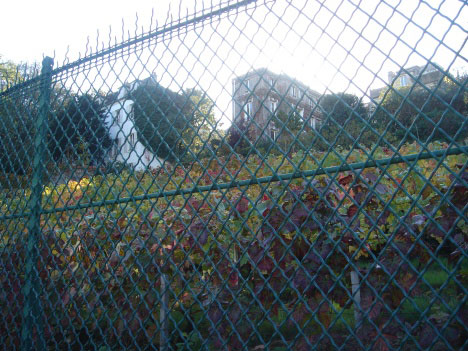
|
|
Well protected from the many tourists
|
Lautrec is also the most important portraitist of figures who shaped the wine-loving artistic life in Montmartre. La Goulue, for example, the queen of the "cancan", and her partner "Valentin", who was a wine merchant in civil life. Only in the evening did he slip into the role of a contortionist who performed in the disreputable cabarets. The "Musée de Montmartre", located directly at the vineyard, houses many testimonies of the often tragic stories of people who lived with wine, perhaps even drew their artistic strength from it, but also just as often perished in it.
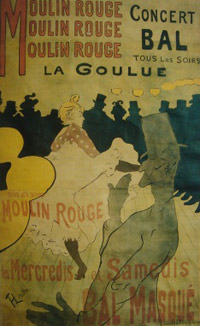
|
|
Famous poster by Toulouse-Lautrec with Goulue and Valentin
|
La Goulue provoked scandals, later squandered her fortune, became a predator tamer, among other things, and ended up as a small-time seller of peanuts and matches in the cafés of Montmartre, drunk as a skunk every day.
Valentin suddenly disappeared from the scene; no one knows for sure what became of him. Contemporary witnesses say he opened a bistro, others claim he became a worker in an elevator factory.
North of the "Clos Montmartre" is also the house of the famous Cabaret du "Lapin-Agile", meeting place and home of so many artists like Renoir, Verlaine, Courteline, Picasso, Max Jaocob and and and. If you want to learn something about the history and atmosphere of the "Vieux Montmartre", click on www.au-lapin-agile.com. There, in sound, word and image, the "old village" with its wine bliss reappears, the life on Montmartre, around the revived vineyard, the yield of which the present-day artist community of Montmartre donates to those people who now live in misery, poverty and need on Montmartre, not unlike those great artists who today are celebrated posthumously and whose works are highly paid.
Sincerely
Yours sincerely
Peter
(Züllig)




